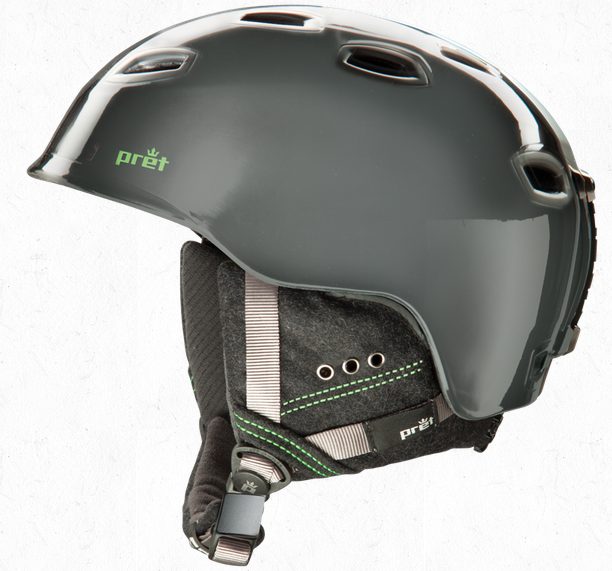Size Tested: Medium
MSRP: $160
Reviewer’s Head Circumference: 57cm
Days Tested: 14
Locations Tested: Canterbury Club Fields and Mt. Hutt Heli Ski, NZ
The Effect is billed as Pret’s “highest performing,” top-of-the-line snowsports helmet for the 13/14 season.
This is partly due to its venting system, which is more complex than the vents on Pret’s lower-priced Shaman and Cynic helmets. This system is intended to draw heat and moisture away from your head, as well as prevent the “brain freeze” that, according to Pret, results from direct airflow into the helmet.
I used the Effect daily during our trip to New Zealand this summer, and I already think that it’s an excellent product and a strong contender in the high-end helmet market.
Fit / Comfort
Most size medium helmets tend to fit me pretty well, though some definitely work better than others. For reference, I own a Smith Maze Link and a Smith Vantage, both mediums, and they fit well with the standard included pads.
The medium Pret Effect fits like my Vantage (I tried them on back to back several times)—namely, both seem to be more oval than round.
I could adjust the Effect’s chin strap and back ratchet pretty easily, although the helmet I tested seemed to have some issues with the ratchet, which wouldn’t stay completely tight. This slip in the ratchet system was initially annoying, but it wasn’t an issue once I started skiing.
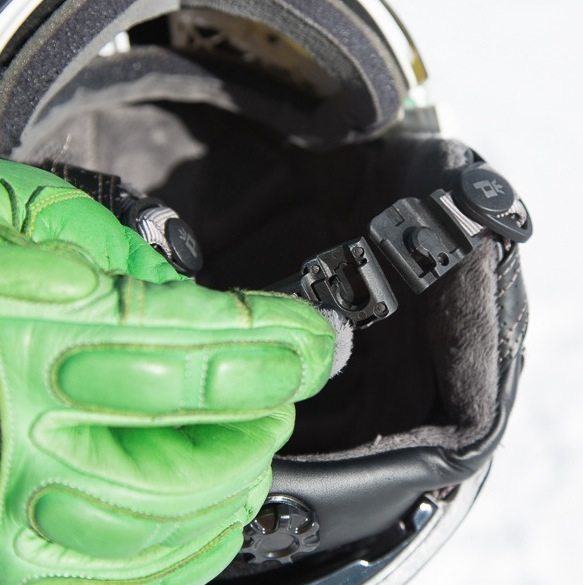
I am a huge fan of the SNAP Fidlock Magnetic Buckle System. The magnetic strap buckle will snap closed once you bring the two parts of the buckle close together—it’s a very easy, very secure system.
Traditional side release buckles work well, and they’re on just about every backpack and helmet on the market. The Fidlock buckles, however, work even better. It’s not only a clever, fun design, it’s also a highly functional one.
When I fasten my snow helmet’s chin strap, I can’t see the buckle and it’s hard to feel since I’m usually wearing gloves. With the Pret Effect’s magnetic buckle, I never had to take my gloves off to take the helmet on or off, and I never fumbled around with the strap buckle. This feature worked flawlessly for me, and I wish every ski helmet had it.
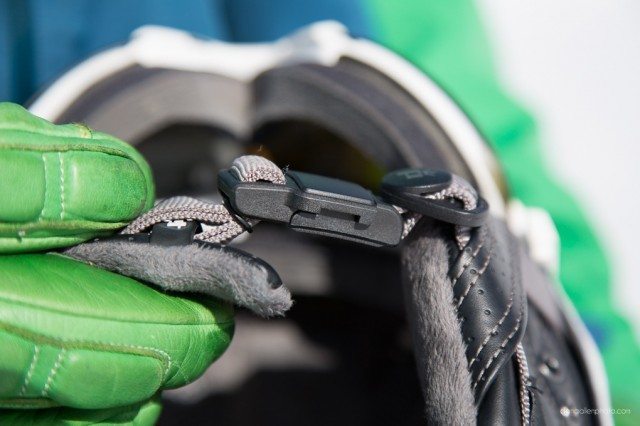
Ventilation
Pret claims that this helmet’s vent design keeps air from flowing directly to your head, thus avoiding “brain freeze.” Personally, I’ve never had a problem with too much airflow when using either of my Smith helmets or an old Giro that had big vents.
The Pret has some airflow, but at times it’s hard to tell if the vents are open or closed. That’s not to say that I felt like I was overheating more quickly while bootpacking than I would if I’d been wearing a different helmet. For me personally, no helmet has enough ventilation to be comfortable for anything more than a short hike, even on a chilly day.
While taking laps at Treble Cone, I alternated ski runs with vents open and closed to see if I could tell a difference in airflow. It was subtle, but I could feel that the helmet was a bit cooler with the vents open. So while the vents are functional, if you’re a sweaty beast, I think you’ll get a little more flow from a helmet like the Smith Vantage that lets air in directly to your scalp.
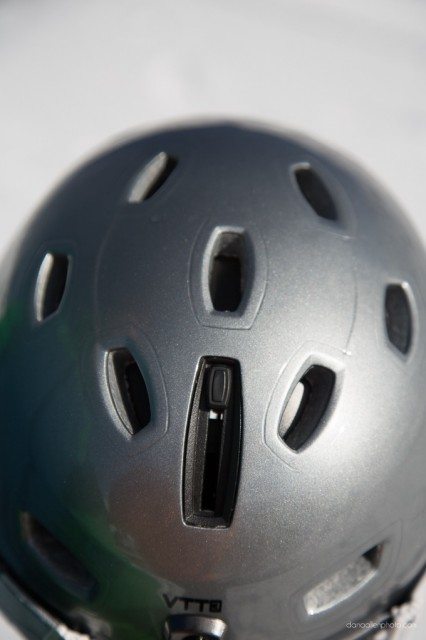
Another design element I appreciate on the Smith Vantage and Variant helmets is that, when the vents are closed, they sit flush with the outer shell of the helmet. If I fall in deep snow (or get a lot of faceshots), the snow slides off the helmet instead of accumulating in the vent holes. I have not skied in super deep conditions with the Pret yet, but I know from past experience that this recessed vent design is prone to filling up with snow and ice.
The Effect’s vents are pretty easy to open and close, but it took a little practice to operate the system with gloves on. The Effect’s vents are controlled by a single slider (see the above picture) and that slider on my Effect helmet was definitely more difficult to open and close than the vents on either the Smith Vantage or Variant—this isn’t a big deal, but there is more resistance in the Effect’s system.
Goggle Fit / Fogging
I’ve used the Giro Onset, the Julbo Meteor, and my favorite Smith IOX with the Pret Effect. All of these goggles work well with the helmet, and I haven’t had any fit issues.
This helmet does not have vents or air channels designed to prevent goggle fogging, though. These vents have become a common feature on helmets, but I’m not sure how effective they are—I haven’t had any more goggle fogging issues with the Effect than I’ve had with any other helmet I’ve used.
Style
This is always a personal call. I’m definitely drawn to understated helmet designs without a lot of flash and few vents. I think the Pret walks a nice line between adequate vents while still maintaining a clean shell surface.
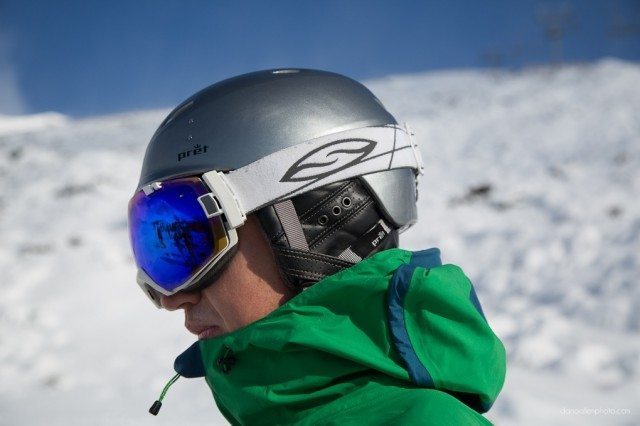
Protection
The Pret meets the industry standard ATSM F2040, CE EN1077, which means that it’s been tested to meet both European and American standards for snowsports helmets. The CE testing is considered to be the more rigorous of the two, and involves a test where the helmet is dropped onto a metal spike.
I have not fallen onto any metal spikes or other nasty obstacles, but in the true spirit of a committed gear tester, I did take a high speed, 150-foot tomahawking fall down a north facing slope at Mt. Olympus.
While my pride may have been a bit dinged, the helmet and its contents remained intact and functional—everything stayed in place. I can only assume that the 10 people in Mt Olympus’s on-slope hot tub who gave me a standing ovation were applauding my choice of helmet rather than the spectacular crash.
Bottom Line
The Pret Effect is a well-designed, comfortable helmet that has a variety of smart features—including innovative magnetic buckles. I think it’s one of the best helmets I’ve used. If you’re looking for a new helmet this season, I think it’s definitely worth your consideration.

